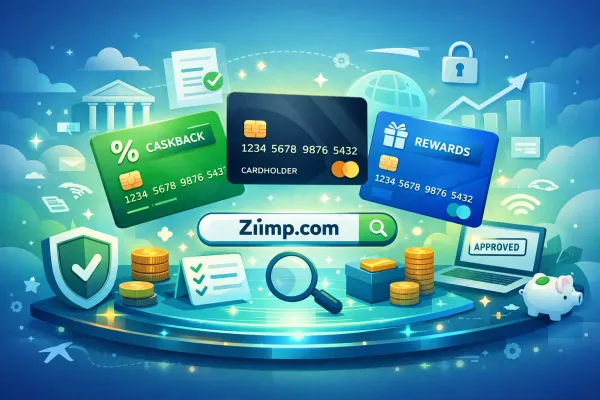FFEL Program Student Loans: What They Are and How They Work

Navigating the maze of student loan options can be overwhelming, but understanding each type is crucial for making informed financial decisions. One significant program that has assisted countless students is the Federal Family Education Loan (FFEL) Program. Although the FFEL Program ended in 2010, its loans still impact many borrowers today. This article delves into what FFEL Program student loans are, how they function, and their implications for current and former students.
What is the FFEL Program?
The FFEL Program was a government-backed initiative designed to help students finance their education through loans provided by private lenders. These loans were subsidized and guaranteed by the federal government, offering various benefits to both lenders and borrowers.
History of the FFEL Program
The FFEL Program, established under the Higher Education Act of 1965, was one of the primary federal student loan programs before being discontinued in 2010. This program allowed private lenders to issue loans to students, with the federal government guaranteeing a portion of the loan in case of default.
Types of FFEL Program Loans
Four main types of loans were available under the FFEL Program:
- Stafford Loans: These could be subsidized or unsubsidized, with the government paying the interest on subsidized loans while the student was in school.
- PLUS Loans: Available to parents and graduate students, these loans required a credit check.
- Consolidation Loans: These allowed borrowers to combine multiple federal student loans into one.
- Perkins Loans: Although not exclusive to the FFEL Program, Perkins Loans were often included in FFEL Consolidation Loans.
How FFEL Program Loans Work

Understanding the mechanics of FFEL Program loans involves looking at the application process, loan disbursement, interest accrual, and repayment plans.
Application Process
Students applied for FFEL loans through the Free Application for Federal Student Aid (FAFSA). The information provided in the FAFSA determined eligibility for federal student aid, including FFEL loans.
Loan Disbursement
Once approved, the loan funds were disbursed directly to the school to cover tuition, fees, and other educational expenses. Any remaining funds were given to the student for additional costs like books and living expenses.
Interest Accrual and Subsidies
For subsidized Stafford Loans, the government paid the interest while the student was in school, during the grace period, and during deferment periods. For unsubsidized loans, interest began accruing as soon as the loan was disbursed.
Repayment Options
FFEL Program loans offered various repayment plans, including:
- Standard Repayment Plan: Fixed payments over 10 years.
- Graduated Repayment Plan: Payments start low and increase every two years.
- Extended Repayment Plan: Payments spread over 25 years.
- Income-Contingent Repayment Plan: Payments based on the borrower’s income, family size, and loan balance.
Advantages of FFEL Program Loans
Despite being phased out, FFEL Program loans provided several advantages that made them an attractive option for many borrowers.
Government Subsidies
Subsidized Stafford Loans offered significant savings as the government covered interest payments during certain periods, reducing the overall cost of the loan.
Flexibility in Repayment
With multiple repayment plans, borrowers could choose options that best suited their financial situation. This flexibility helped many manage their debt more effectively.
Consolidation Options
FFEL Consolidation Loans allowed borrowers to combine multiple federal loans into a single loan, simplifying repayment and potentially lowering monthly payments.
Disadvantages of FFEL Program Loans
However, FFEL Program loans were not without their drawbacks. Some challenges and limitations included:
Private Lender Involvement
Since FFEL loans were issued by private lenders, interest rates and terms could vary, leading to potential discrepancies and confusion among borrowers.
Higher Costs for Some Borrowers
Depending on the lender, some borrowers faced higher interest rates and fees compared to Direct Loans issued directly by the federal government.
Complexity in Loan Management
Managing multiple loans from different lenders could be cumbersome, especially when dealing with different interest rates, repayment schedules, and terms.
Transition to Direct Loans
In 2010, the Health Care and Education Reconciliation Act ended the FFEL Program, transitioning all new federal student loans to the Direct Loan Program. This shift aimed to streamline the student loan process and reduce costs for the government.
Reasons for the Transition
The government projected significant savings by eliminating subsidies to private lenders and handling loans directly. These savings were redirected to increase funding for Pell Grants and other educational initiatives.
Impact on Borrowers
Borrowers with existing FFEL loans were unaffected by the transition, but new loans after July 1, 2010, were issued under the Direct Loan Program. This change simplified the borrowing process and provided more consistent terms for all federal student loans.
Managing FFEL Program Loans Today
Borrowers still managing FFEL loans have several options to consider for repayment and potential forgiveness.
Repayment Plans
FFEL borrowers can choose from various repayment plans, similar to those available for Direct Loans. Income-driven repayment plans, like Income-Based Repayment (IBR) and Income-Contingent Repayment (ICR), are particularly beneficial for those with high debt relative to their income.
Loan Consolidation
Borrowers can consolidate their FFEL loans into a Direct Consolidation Loan. This can simplify repayment and provide access to additional repayment plans and loan forgiveness programs.
Loan Forgiveness Programs
FFEL loans are eligible for certain forgiveness programs, such as Public Service Loan Forgiveness (PSLF), provided they are consolidated into a Direct Loan. Teacher Loan Forgiveness is another option for eligible educators.
FFEL Program Loan Servicers
Several loan servicers manage FFEL Program loans, each offering different levels of customer service and online resources. Common servicers include Navient, Great Lakes, and Nelnet.
Choosing a Loan Servicer
While borrowers typically do not choose their loan servicer, understanding each servicer's offerings and customer service can help manage loans more effectively. It's essential to stay in contact with your servicer, update personal information, and explore repayment options and assistance programs they provide.
The Future of FFEL Program Loans
While the FFEL Program itself is no longer active, its legacy continues to impact current borrowers. Legislative changes and policy updates may further affect how these loans are managed in the future.
Potential Legislative Changes
Future legislation may address the remaining FFEL loan portfolio, potentially offering more favorable terms or additional forgiveness options. Staying informed about these changes is crucial for borrowers seeking to optimize their loan repayment strategy.
Borrower Advocacy and Resources
Organizations and advocacy groups continue to support borrowers with FFEL loans, offering resources, counseling, and assistance in navigating the complexities of student loan repayment.
FAQs
What is an FFEL Program loan?
An FFEL Program loan is a federal student loan issued by private lenders and guaranteed by the federal government, designed to help students finance their education.
How do I know if I have an FFEL loan?
You can check your federal student loan information through the National Student Loan Data System (NSLDS) or contact your loan servicer.
Can I consolidate my FFEL loans?
Yes, you can consolidate your FFEL loans into a Direct Consolidation Loan, which may provide access to additional repayment plans and loan forgiveness programs.
Are FFEL loans eligible for Public Service Loan Forgiveness (PSLF)?
FFEL loans must be consolidated into a Direct Loan to qualify for PSLF.
What repayment plans are available for FFEL loans?
Repayment plans include Standard, Graduated, Extended, and Income-Driven Repayment Plans such as Income-Based Repayment (IBR) and Income-Contingent Repayment (ICR).
How can I get help with my FFEL loans?
Contact your loan servicer for assistance with repayment options, consolidation, and understanding eligibility for forgiveness programs. Additionally, resources like the Federal Student Aid website and nonprofit organizations can provide valuable guidance.
Conclusion
FFEL Program student loans have played a significant role in helping students achieve their educational goals. While the program has ended, understanding the nuances of these loans remains crucial for current borrowers. By exploring repayment options, potential consolidation, and forgiveness programs, borrowers can effectively manage their FFEL loans and work towards financial stability.




